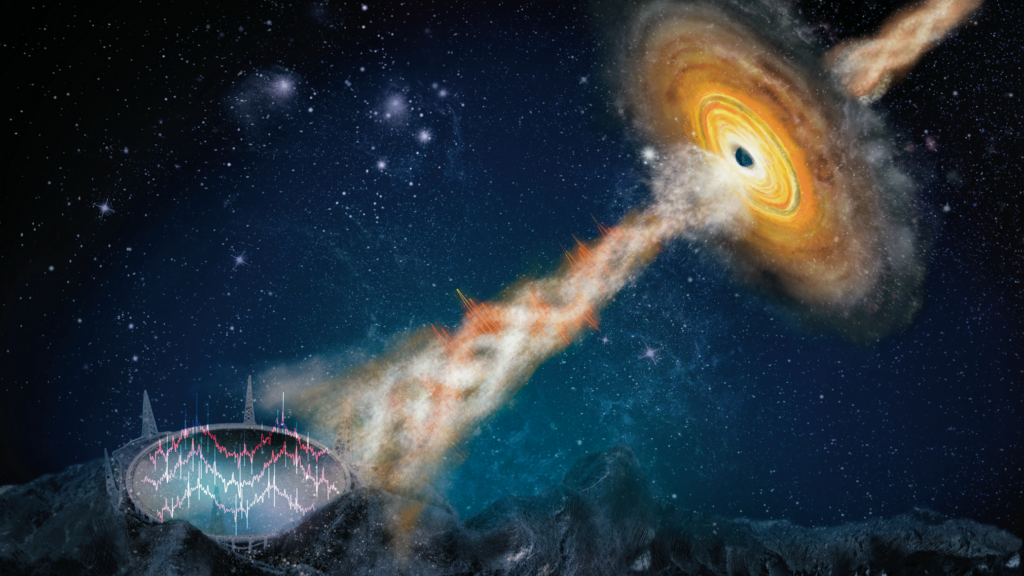An international team of researchers have made an exciting new discovery while investigating galactic black holes. For the first time, astronomers have revealed features of a microquasar system that have never before been seen.
Black holes, often likened to cosmic vacuum cleaners for their ability to pull in and consume matter, are among the universe’s most enigmatic entities. They are so dense and powerful that nothing, not even light, can escape their gravitational pull.
Researchers have known about two primary types of black holes. The first, stellar-mass black holes, are about 10 times the mass of our sun and often form when massive stars collapse. They tend to showcase their presence when they devour material from nearby stars. On the larger side, we have supermassive black holes, situated at the heart of some galaxies. These black holes can weigh as much as millions to billions of suns, lighting up their surroundings to form bright regions known as quasars. There’s also an interesting category of stellar-mass black holes that shoot out powerful jets of charged matter, and these are called microquasars.
Researchers from UNLV and China have recently discovered something new about a microquasar named GRS 1915+105. What’s particularly exciting about their discovery is the detection of a specific type of signal called a quasi-periodic oscillation (QPO) in the radio band. To break this down, think of QPOs as rhythmic pulses that help scientists get insights into how cosmic systems like black holes operate. These signals had been observed in X-rays before but spotting them in the radio emission from a microquasar is a first.
“The peculiar QPO signal has a rough period of 0.2 seconds, or a frequency of about 5 Hertz,” says Wei Wang, study author and a professor with China’s Wuhan University, in a university release. “Such a signal does not always exist and only shows up under special physical conditions. Our team was lucky enough to catch the signal twice — in January 2021 and June 2022, respectively.”
Bing Zhang, study author and director of the Nevada Center for Astrophysics, shed light on the importance of this signal. He suggested that it could be the first evidence pointing to a “jet” launched by this type of black hole. These jets are like cosmic beams, composed of charged matter and a magnetic field, racing nearly as fast as light.

“In accreting black hole systems, X-rays usually probe the accretion disk around the black hole while radio emission usually probes the jet launched from the disk and the black hole,” explains Zhang. “The detailed mechanism to induce temporal modulation in a relativistic jet is not identified, but one plausible mechanism would be that the jet is underlying precession, which means the jet direction is regularly pointing towards different directions and returns to the original direction once every about 0.2 seconds.”
Even though there’s still much to understand about these signals, Zhang believes the QPOs could be tied to a wobbling jet that periodically changes direction, possibly due to the influence of a spinning black hole’s gravitational effects on nearby space.
“Other possibilities exist, though, and continued observations of this and other galactic microquasar sources will bring more clues to understand these mysterious QPO signals,” says Zhang.
The study is published in the journal Nature.











